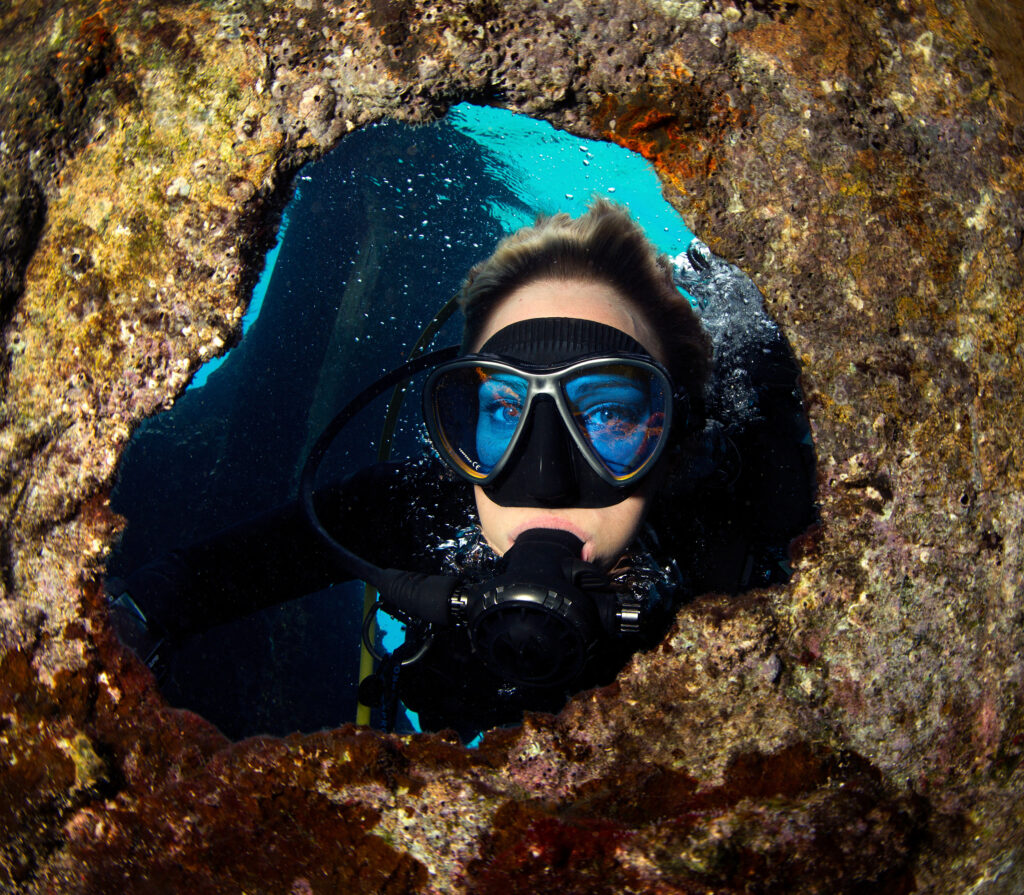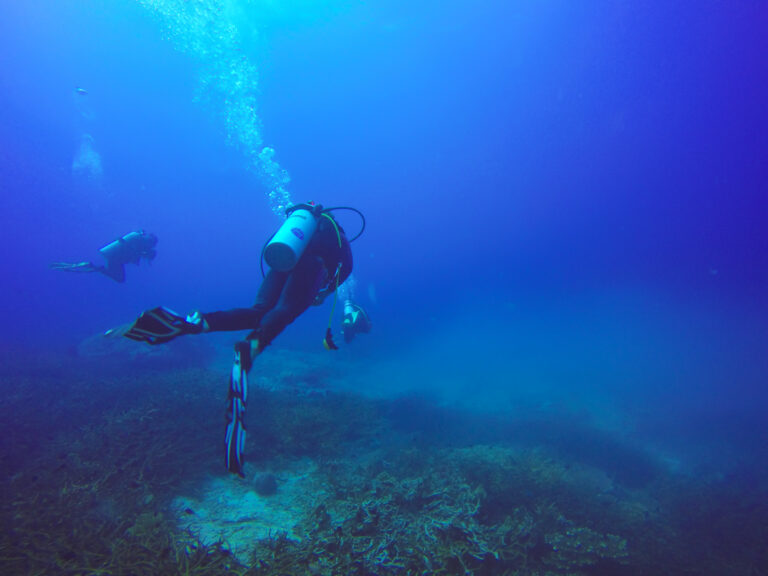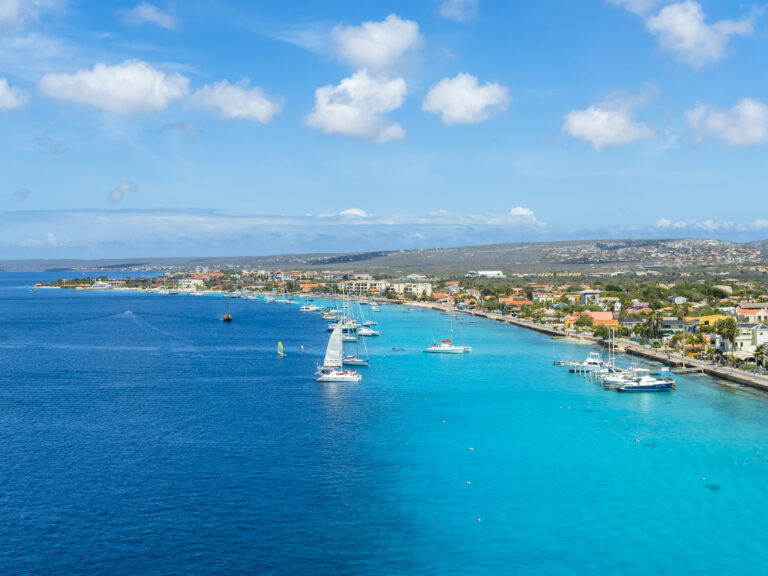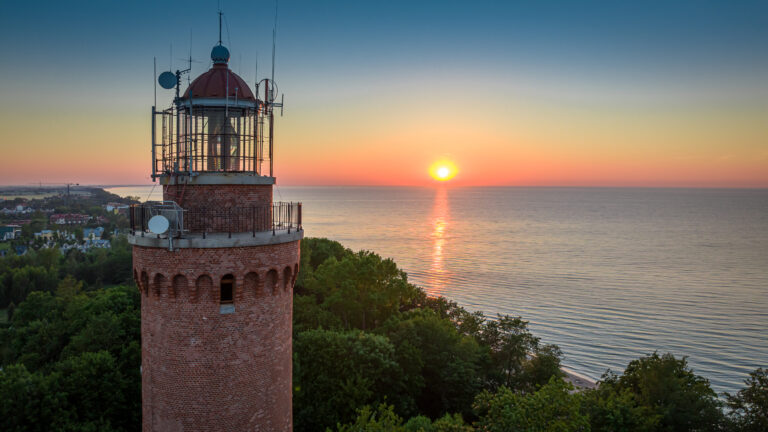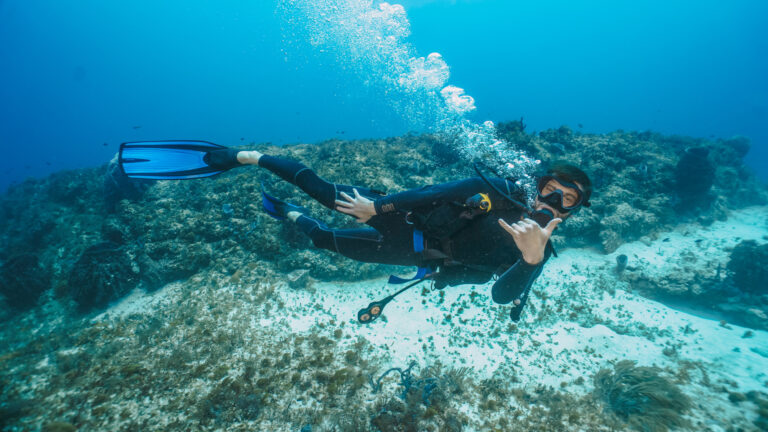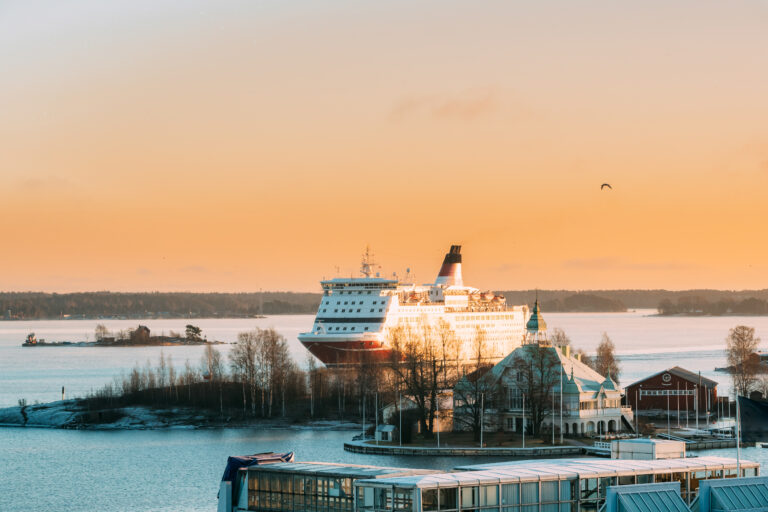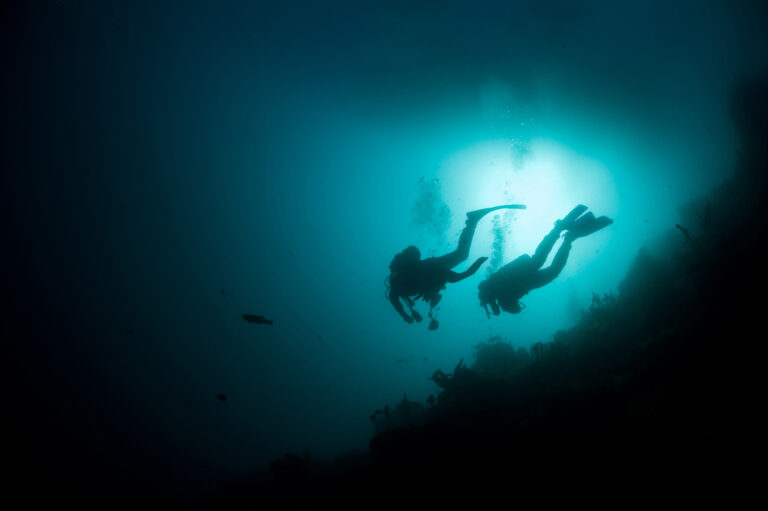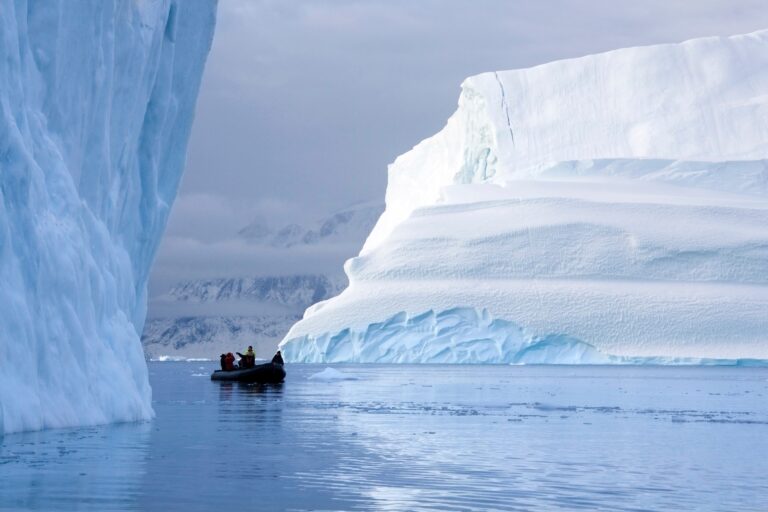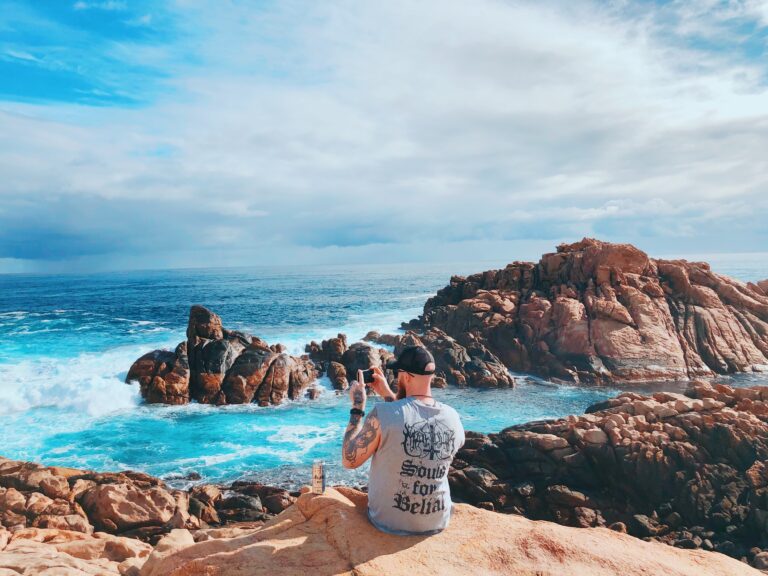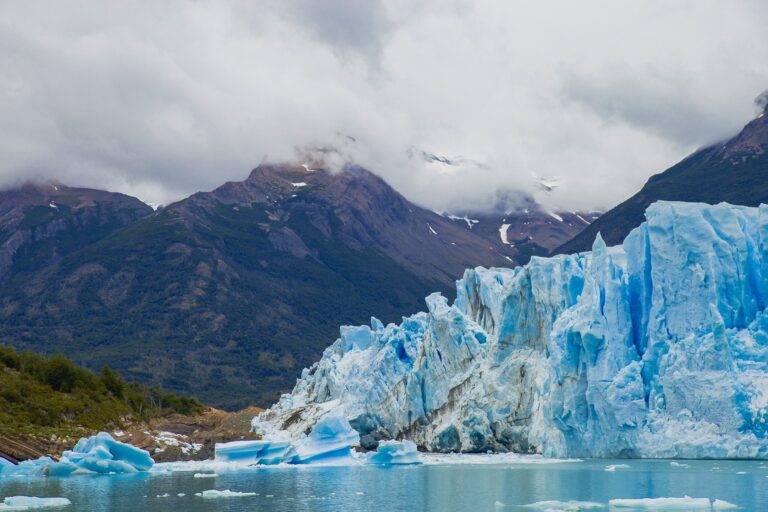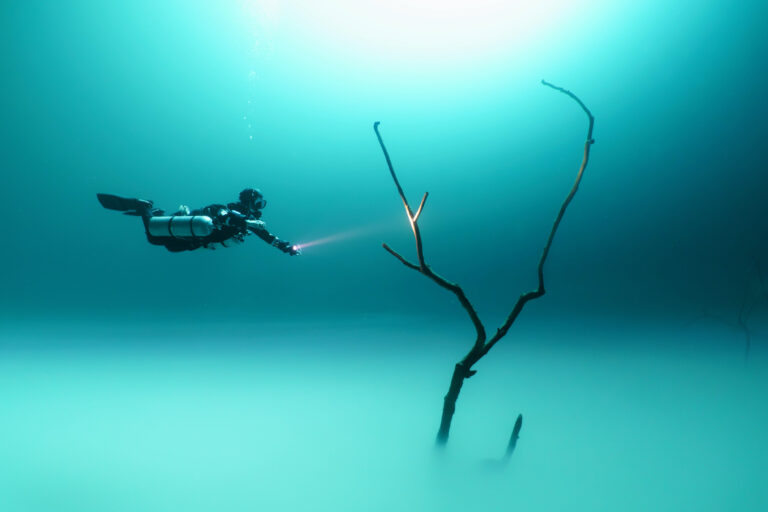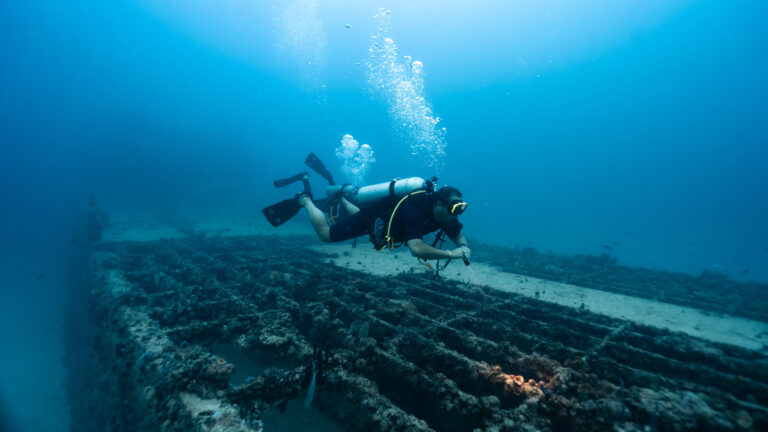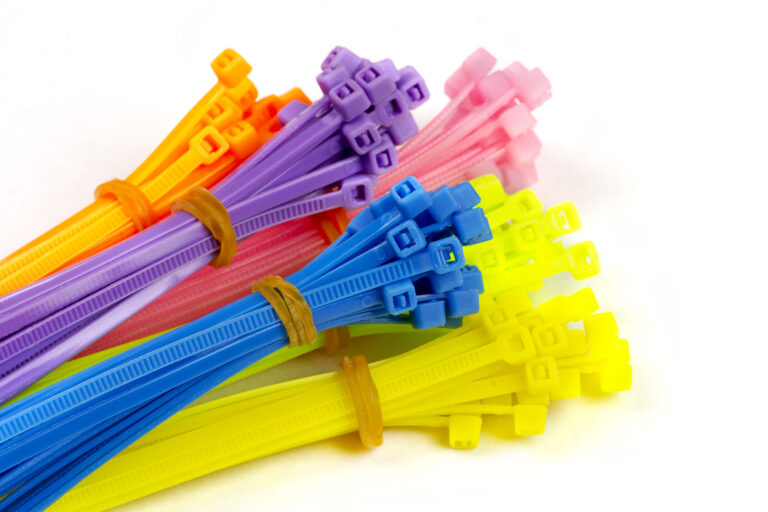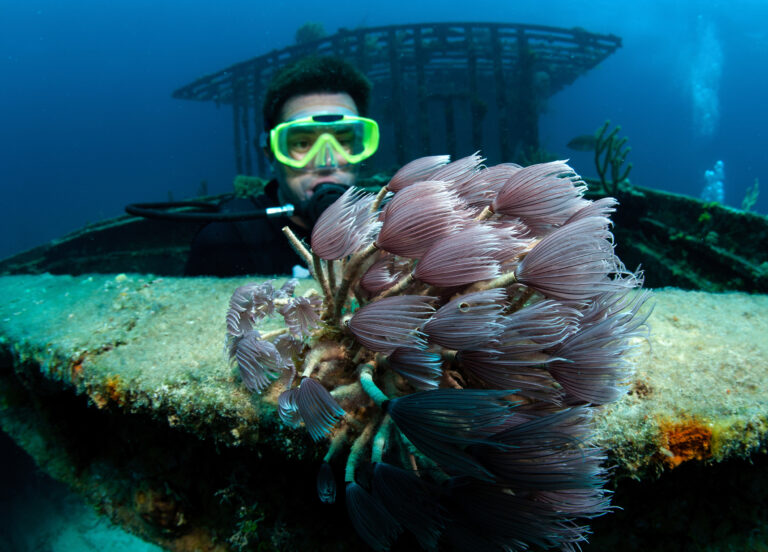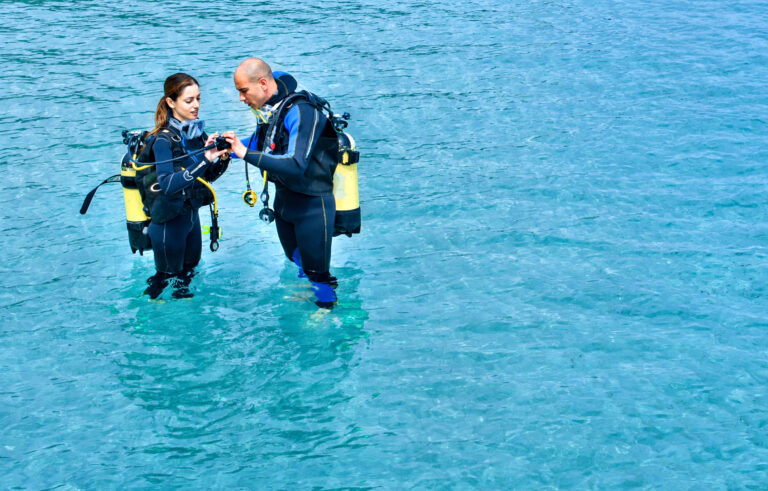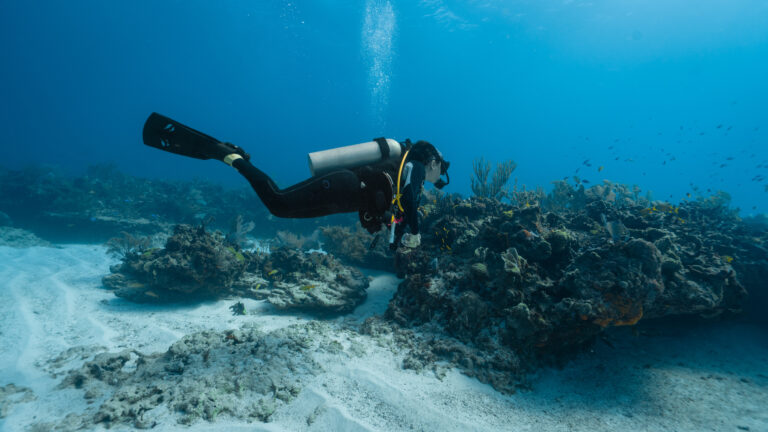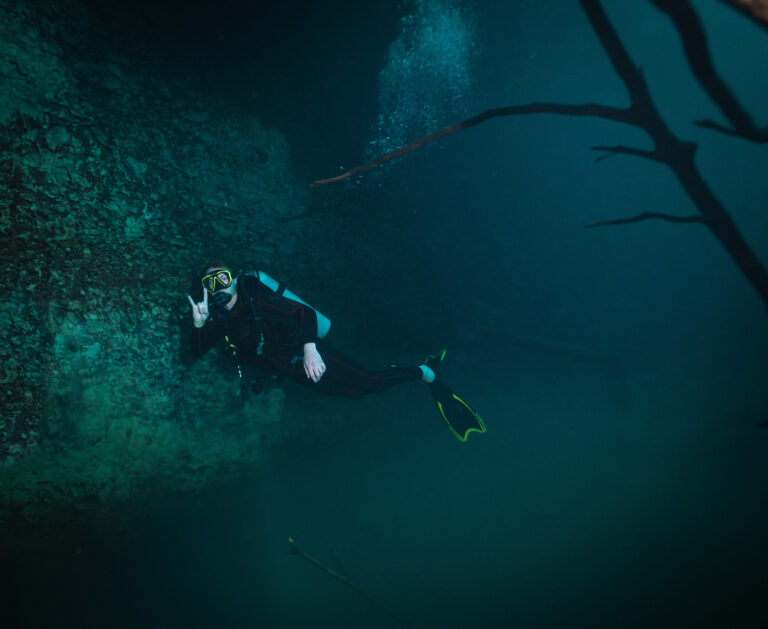Scuba Divers’ Travel Guide to American Samoa
American Samoa, located in the heart of the South Pacific, offers scuba divers a breathtaking underwater world filled with vibrant coral reefs and abundant marine life. The clear, warm waters provide excellent visibility, allowing divers to fully appreciate the stunning coral formations and diverse fish species. American Samoa’s pristine marine environments are home to everything from colorful reef fish to larger pelagic species. The island’s remote location ensures that the dive sites are relatively untouched, offering a sense of exploration and discovery. For scuba travelers, American Samoa is a destination that promises awe-inspiring underwater adventures.
Location and Geography
Nestled in the heart of the South Pacific, American Samoa is a remote yet captivating scuba diving destination composed of five volcanic islands and two atolls. This unincorporated U.S. territory lies approximately halfway between Hawaii and New Zealand, offering a unique blend of rugged natural beauty and rich Polynesian culture. The islands are fringed with pristine coral reefs and steep drop-offs, providing a dramatic underwater landscape for divers. The main island of Tutuila, with its famous Pago Pago Harbor, is the gateway to exploring the underwater wonders, while the smaller, less developed islands of Ofu, Olosega, and Ta’ū boast untouched coral ecosystems. The surrounding waters of the National Park of American Samoa, one of the few national parks in the world with a marine environment, protect a diverse array of marine life, making it an exceptional location for scuba enthusiasts seeking a truly off-the-beaten-path adventure.
Visa and Entry Requirements
Before embarking on your underwater adventure to American Samoa, it is essential to understand the visa and entry requirements for this unique U.S. territory. U.S. citizens can enter and exit American Samoa with a valid U.S. passport and do not require a visa for stays of up to 30 days. However, non-U.S. citizens must apply for an entry permit before arrival, which is typically valid for 30 days and can be extended. Travelers from countries participating in the U.S. Visa Waiver Program (VWP) must note that the VWP does not apply to American Samoa, so they will still need to obtain an entry permit. All visitors must possess a return ticket or onward ticket and may be asked to demonstrate sufficient funds for their stay. It’s important to check the latest entry requirements with the American Samoa Immigration Office or through an official U.S. embassy or consulate, as regulations can change. Once your paperwork is in order, the pristine reefs and vibrant marine life of American Samoa await.
Getting to American Samoa
Getting to American Samoa, a remote yet captivating scuba diving destination in the heart of the South Pacific, is an adventure in itself. Travelers typically fly into Pago Pago International Airport (PPG) on Tutuila Island, the main gateway to this U.S. territory. The most common route is to take a flight from Honolulu, Hawaii, which is serviced by Hawaiian Airlines with direct flights several times a week. Although less frequent, there are also flights connecting Pago Pago with other Pacific islands such as Samoa, Fiji, and Tonga. Upon arrival, divers are greeted by lush tropical landscapes and the warm, clear waters of the South Pacific, teeming with vibrant marine life. It’s important to plan your trip well in advance, as flight options can be limited and often require booking early to secure a seat. Once there, the tranquil beauty of American Samoa’s underwater world, with its pristine coral reefs and diverse ecosystems, makes the journey well worth the effort.
Best Time to Dive
Getting to American Samoa, a remote yet captivating scuba diving destination in the heart of the South Pacific, is an adventure in itself. Travelers typically fly into Pago Pago International Airport (PPG) on Tutuila Island, the main gateway to this U.S. territory. The most common route is to take a flight from Honolulu, Hawaii, which is serviced by Hawaiian Airlines with direct flights several times a week. Although less frequent, there are also flights connecting Pago Pago with other Pacific islands such as Samoa, Fiji, and Tonga. Upon arrival, divers are greeted by lush tropical landscapes and the warm, clear waters of the South Pacific, teeming with vibrant marine life. It’s important to plan your trip well in advance, as flight options can be limited and often require booking early to secure a seat. Once there, the tranquil beauty of American Samoa’s underwater world, with its pristine coral reefs and diverse ecosystems, makes the journey well worth the effort.
Accommodation Options
In the tropical paradise of American Samoa, scuba divers will find a modest but comfortable range of accommodation options to suit their needs and preferences. Nestled amidst lush greenery and fringed by the sparkling South Pacific, visitors can choose from family-run guesthouses, traditional fales (open-air beach huts), and a few mid-range hotels that offer modern amenities. Many accommodations are strategically located near the ocean, providing easy access to the island’s renowned dive sites. While luxury resorts are not a feature of this destination, the available lodgings often boast personal service and a chance to immerse oneself in the local Samoan culture. Divers should book in advance, especially during peak travel seasons, to secure their ideal retreat after a day exploring the underwater wonders of American Samoa’s vibrant coral reefs and marine life.
Dive Operators and Dive Shops
In the remote and pristine waters of American Samoa, a small but dedicated group of dive operators and shops awaits to unveil the underwater marvels of this South Pacific gem. With a focus on personalized experiences and safety, these local experts are well-versed in the unique marine landscapes that range from vibrant coral gardens to dramatic drop-offs teeming with life. Dive shops in American Samoa, such as those found in the capital of Pago Pago, offer a range of services including equipment rentals, PADI-certified training courses, and guided excursions to some of the world’s least-explored reefs. Due to the limited number of operators, it’s advisable to book in advance to secure your spot on a dive boat. Whether you’re a novice diver looking to get your fins wet or an experienced underwater explorer seeking new challenges, the dive operators in American Samoa will provide an unforgettable experience with a touch of local knowledge and hospitality that is as warm as the tropical waters.
Transportation within American Samoa
Transportation within American Samoa, a remote yet captivating scuba diving destination in the South Pacific, is relatively straightforward, given the small size of its islands. Upon arrival at Pago Pago International Airport on Tutuila, the archipelago’s largest island, visitors can rent cars or utilize taxis to reach various points of interest, including dive shops and boat launch sites. The local aiga buses, colorfully decorated and offering a more authentic Samoan experience, provide an economical way to travel along the main roads, though their schedules can be irregular. For those looking to explore the pristine underwater environments of the smaller islands like Ofu or Aunu’u, small boat charters are available, and they offer personalized access to some of the most secluded and stunning dive spots. Keep in mind that inter-island travel may require planning ahead, as services like the MV Lady Naomi ferry operate on a limited schedule, and flights with small local carriers can be subject to weather conditions and demand.
Currency and Payment Methods
In American Samoa, the official currency is the United States Dollar (USD), which is convenient for American travelers as there is no need for currency exchange. Credit cards such as Visa and MasterCard are accepted at most hotels, car rental agencies, and larger stores, but it’s important to note that many smaller shops, local markets, and rural dive operators may only accept cash. Therefore, it’s advisable to carry a sufficient amount of cash, especially when traveling outside of the main urban areas like Pago Pago. ATMs are available in the capital and some other locations, but they can be scarce once you venture into more remote areas. It’s also a good idea to inform your bank of your travel plans to avoid any potential issues with your cards while abroad. Always have a small amount of cash on hand for tips, small purchases, and entry fees for certain dive sites or marine parks.
Language and Communication
When traveling to American Samoa for scuba diving, it’s important to note that the primary language spoken is Samoan, although English is also an official language and widely understood, particularly in tourist areas and among the diving community. Divers should have little trouble communicating with dive operators and guides in English. However, learning a few basic phrases in Samoan can be a sign of respect and may enhance your interactions with local residents. Non-verbal communication, such as hand signals, is universal in the diving world, and dive briefings will typically include a review of these essential gestures. It’s also worth noting that the Samoan culture values politeness and courtesy, so a friendly demeanor and respectful approach in all communications will go a long way in ensuring a harmonious experience both above and below the water.
Local Culture and Attractions
American Samoa, a tropical paradise in the South Pacific, offers a unique blend of Polynesian culture and American influence that enchants visitors both above and below the waves. When not exploring the island’s spectacular underwater landscapes, divers can immerse themselves in the local Samoan way of life, known as “Fa’a Samoa,” which emphasizes respect, community, and tradition. Attend a vibrant village fiafia (celebration) to witness the hypnotic Samoan fire knife dance, sample traditional dishes like oka (raw fish in coconut cream) and palusami (baked taro leaves filled with coconut milk), or simply engage with the warm and welcoming locals. On land, the National Park of American Samoa beckons with lush rainforests and volcanic peaks, while historic sites like the World War II relics at Blunts and Breakers Point tell the tales of the island’s strategic past. The blend of natural beauty, rich history, and living culture makes American Samoa an unforgettable destination for divers and adventurers alike.
Cultural Etiquette and Tips
When visiting American Samoa for scuba diving, it’s essential to approach the local culture with respect and sensitivity. As a territory of the United States, American Samoa has a unique blend of traditional Polynesian culture and American influences. Always ask for permission before taking photos of people or entering villages, as a sign of respect. Dress modestly when not diving, especially when visiting villages or attending local events. It’s customary to remove shoes before entering someone’s home or a falesamoa (traditional Samoan house). When interacting with locals, be mindful of the importance of family and community; addressing elders with reverence is appreciated. Offering a small gift or ‘fa’alavelave’ when visiting a village can be a kind gesture, reflecting the Samoan spirit of sharing and reciprocity. Remember to support local businesses and respect the pristine natural environment, both on land and underwater, to ensure the sustainability of this beautiful diving destination.
Local Laws and Regulations Relevant to Tourists
When planning a scuba diving trip to American Samoa, it is crucial for tourists to familiarize themselves with local laws and regulations to ensure a safe and lawful experience. The National Park of American Samoa, which includes sections of three islands and a coral reef, requires divers to obtain a permit before exploring its underwater treasures. It is illegal to collect coral or any marine life within the park boundaries, and this is strictly enforced to preserve the delicate ecosystem. Additionally, fishing regulations are in place, and certain areas may be off-limits to fishing or have restrictions on the types of fish that can be taken. Tourists should also be aware that American Samoa observes traditional communal fishing rights, which means that certain coastal waters are managed by local villages, and permission from village authorities may be required for access or fishing. It is advisable to engage with local dive operators who are knowledgeable about these regulations and can provide guidance on respecting cultural practices, such as the “fa’asamoa” – the Samoan way – which includes showing deference to village chiefs and community norms. Lastly, ensure that you carry all necessary documentation, such as a diving certification and a valid passport, as immigration laws require non-residents to have a permit to enter American Samoa.
Safety Tips and Emergency Contacts
When planning a scuba diving trip to the enchanting waters of American Samoa, safety should be your paramount concern. Prior to your underwater adventure, ensure that you are well-versed with the PADI (Professional Association of Diving Instructors) or NAUI (National Association of Underwater Instructors) safety guidelines, and that your diving equipment is in excellent condition. Always dive within your certification limits and never go alone; the buddy system is a crucial safety protocol in diving. Be aware of the local weather conditions and water currents, as they can change rapidly. It is essential to stay hydrated, avoid alcohol before dives, and ensure you are well-rested. In case of an emergency, it is vital to know that the LBJ Tropical Medical Center in Pago Pago is equipped with a recompression chamber. For immediate assistance, contact the local emergency services at 911. Additionally, keep the contact information for the nearest DAN (Divers Alert Network) regional emergency hotline and the U.S. Coast Guard at hand. Remember, the key to a memorable diving experience in American Samoa is respecting the ocean, its inhabitants, and prioritizing safety at all times.
Health and Travel Insurance
When planning your scuba diving adventure to the enchanting underwater realms of American Samoa, it is crucial to prioritize your health and travel insurance. Given the remote nature of this Pacific paradise, access to comprehensive medical facilities is limited, particularly for hyperbaric treatment necessary for decompression sickness—a potential risk for divers. Ensure that your travel insurance policy includes coverage for scuba diving activities and provides for medical evacuation, which can be exorbitantly expensive but essential in the event of an emergency. Verify that the policy covers the costs of transportation to a facility with appropriate medical care, which may be off-island. Additionally, it’s wise to be up-to-date with routine vaccinations and to consult with a travel medicine specialist for any recommended immunizations specific to the region. By securing robust health and travel insurance, you can immerse yourself in the stunning clarity of American Samoa’s waters with peace of mind, knowing you’re well-protected against unforeseen circumstances.

